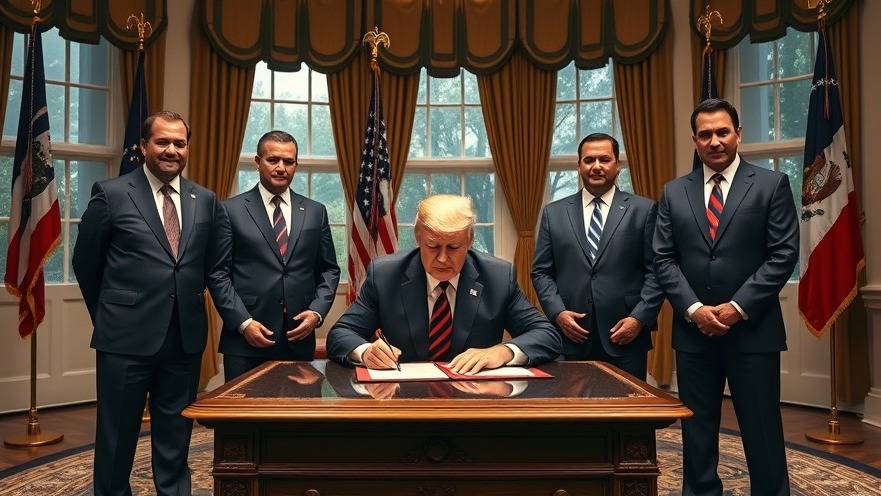
Trump's Push for U.S. Drug Manufacturing
On May 5, 2025, President Donald Trump signed an executive order aimed at enhancing the production of pharmaceuticals within the United States. This directive asks the Food and Drug Administration (FDA) to streamline regulations governing the establishment of new drug manufacturing facilities. The president's objective is clear: boost domestic supply and support industries that can fortify the U.S. supply chain while lessening dependence on overseas manufacturers.
Investments and Economic Factors
In a demonstration of commitment, big pharmaceutical companies have pledged over $170 billion towards the construction of new manufacturing plants across America this year. The motivation behind this investment largely stems from the desire to consolidate supply chains and avoid the pitfalls of potential new tariffs. The recent economic strategies implemented, such as the Tax Cut and Jobs Act, have provided corporations with the incentive to invest domestically. However, the looming threat of tariffs on imported drugs adds to an already precarious balance, forcing companies to navigate a tricky landscape of funding their operations amidst regulation fluctuations.
FDA's Role in Reshaping Drug Production
According to the executive order, the FDA will work to eliminate unnecessary regulatory hurdles that delay the construction of new drug plants, with the claim that the building process currently extends from five to ten years. Trump’s order emphasizes the reduction of "duplicative or unnecessary requirements" for licensure inspections, aiming to maximize the predictability and timeliness of facility openings. However, industry experts suggest that while this order is a necessary step, the actual impacts on the U.S. supply chain may not be immediately felt.
The Bigger Picture: Health and Wellness Implications
The broader implications of such regulatory changes translate to significant impacts on community health and wellness. As new manufacturing facilities emerge, the availability of medications could improve, potentially lowering costs for consumers. A supply chain fortified through domestic production could enhance community health centers’ ability to obtain essential medications and health products, promoting optimal health and wellness across various sectors.
Public Reaction and Future Predictions
While the large pharmaceutical companies are rallying behind the potential changes, public opinion remains mixed. Some consumers support the idea of more accessible drugs at lower prices, while others express concerns over the price of necessary medications amidst the unpredictable shifts in tariffs. The upcoming announcements on tariffs and drug pricing rules are also generating anticipation, requiring stakeholders to stay informed on these evolving conditions.
Balancing Health Needs and Economic Realities
For community members, understanding the nuances behind these legislative actions is critical. The health and wellness landscape is interwoven with economic realities; as businesses invest in domestic manufacturing, residents must prepare for the potential shifts in product availability and costs. Residents of cities like San Antonio, where health and wellness businesses are flourishing, should be aware of these changes as they engage with local health initiatives and businesses.
Take Action: Stay Informed on Health Policies
As we witness major changes in our health landscape driven by policy decisions, it’s crucial for individuals to stay informed and engaged. Whether through attending local health and wellness events in San Antonio or exploring resources on natural medicine, community engagement will play a vital part in adapting to these developments.
 Add Element
Add Element  Add Row
Add Row 




Write A Comment